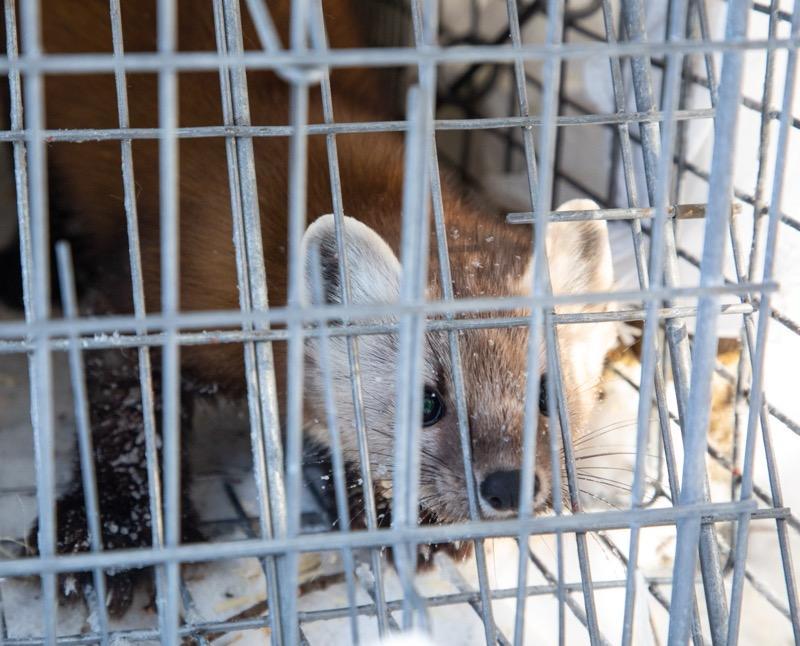In real estate, it’s all about the location. And a study of American pine marten populations in two different locations is underway to shed light on just how important this is to this weasel species.
After regional large-scale forest cutting and overhunting in the late 1800s, martens were nearly extirpated. In the decades that followed, they naturally rebounded in northern Minnesota’s Superior National Forest. But reintroduction attempts in the Manistee National Forest in lower Michigan didn't go as well. Martens are still present but at low density, according to research by Grand Valley State University and the Little River Band of Ottawa Indians.
NRRI Wildlife Biologist Michael Joyce is collaborating with these university and tribal researchers in Michigan to better understand differences between the two marten populations. To do this, Joyce needs to know a lot more about what the martens are eating and how they use the forest to find their prey.
“You can’t have good, applied solutions if you don’t understand the basics of the system,” said Joyce. “So, understanding what they’re eating and how that is driven by the landscape, the fine-scale to large-scale drivers, will help us understand both populations better.”

The hope is that this study can help the resource managers of Manistee make decisions to improve habitat for their reintroduced martens. It could also inform resource management decisions in the Superior National Forest, which is predicted to become more like southern Michigan as climate change impacts take hold. What are the habitat implications for northern martens?
Pine martens are culturally important to the Little River Band of Ottawa Indians as one of several Anishinaabe clan animals. The Band is based in Manistee.
Trekking and Tracking
Through the winter of 2022-23, Joyce and his team have deployed GPS collars on eight martens to track their movements in the Superior National Forest, bringing the total number of martens monitored to 25 over the last year. The Michigan researchers have collected similar data in their study area. The movements link the martens’ locations to their prey selection, acquired by scat analysis. The hypothesis is that the two different forest landscapes provide different prey to the martens – more reptiles in the south and more snowshoe hare in the north. The scat is analyzed by Grand Valley State researchers to inform the diet portion of the study.
Joyce explained that martens are “generalist” carnivores, so they will eat what’s available. His research will inform the importance of diet and the marten’s ability to thrive. He also wants to understand if the warmer climate of southern Michigan – less snowpack, different tree species – has an impact on the mammals.
“As the northern Minnesota climate warms, certain prey currently abundant in Michigan will start being more abundant up north, and with this study, we’ll be able to predict the martens’ response as prey communities change,” said Joyce.
Building the Knowledge
Joyce started studying marten habitat back in 2011, which led to his doctorate degree in UMD’s Integrated Biosciences program. His research, a collaboration with the Minnesota Department of Natural Resources, focused on the marten’s preference for, and availability of, old, hollowed out trees for denning and raising kits.
A 2021 study by NRRI graduate student Taylor Velander, looked at marten rest sites, snowpack and thermal conditions in Minnesota and Michigan. This new project is part of a longer collaboration to understand how climate change affects marten behavior and population status.
“Separately, each study will provide information for local land managers should they need that data, but the location comparison is much more valuable than each dataset on its own,” said Joyce.
[Photo Credit Above: Ryan Pennesi]
